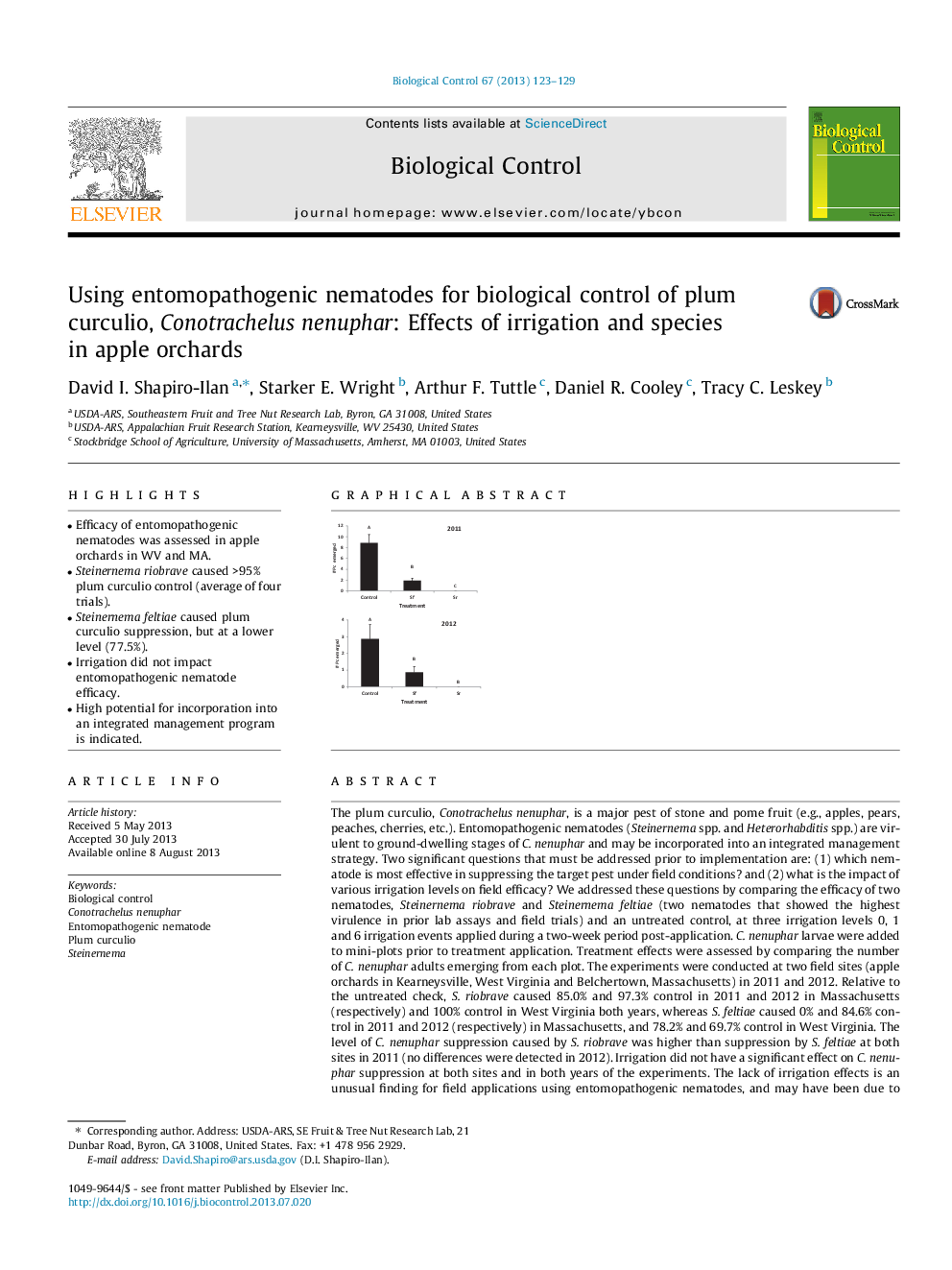| کد مقاله | کد نشریه | سال انتشار | مقاله انگلیسی | نسخه تمام متن |
|---|---|---|---|---|
| 4504041 | 1321054 | 2013 | 7 صفحه PDF | دانلود رایگان |

• Efficacy of entomopathogenic nematodes was assessed in apple orchards in WV and MA.
• Steinernema riobrave caused >95% plum curculio control (average of four trials).
• Steinernema feltiae caused plum curculio suppression, but at a lower level (77.5%).
• Irrigation did not impact entomopathogenic nematode efficacy.
• High potential for incorporation into an integrated management program is indicated.
The plum curculio, Conotrachelus nenuphar, is a major pest of stone and pome fruit (e.g., apples, pears, peaches, cherries, etc.). Entomopathogenic nematodes (Steinernema spp. and Heterorhabditis spp.) are virulent to ground-dwelling stages of C. nenuphar and may be incorporated into an integrated management strategy. Two significant questions that must be addressed prior to implementation are: (1) which nematode is most effective in suppressing the target pest under field conditions? and (2) what is the impact of various irrigation levels on field efficacy? We addressed these questions by comparing the efficacy of two nematodes, Steinernema riobrave and Steinernema feltiae (two nematodes that showed the highest virulence in prior lab assays and field trials) and an untreated control, at three irrigation levels 0, 1 and 6 irrigation events applied during a two-week period post-application. C. nenuphar larvae were added to mini-plots prior to treatment application. Treatment effects were assessed by comparing the number of C. nenuphar adults emerging from each plot. The experiments were conducted at two field sites (apple orchards in Kearneysville, West Virginia and Belchertown, Massachusetts) in 2011 and 2012. Relative to the untreated check, S. riobrave caused 85.0% and 97.3% control in 2011 and 2012 in Massachusetts (respectively) and 100% control in West Virginia both years, whereas S. feltiae caused 0% and 84.6% control in 2011 and 2012 (respectively) in Massachusetts, and 78.2% and 69.7% control in West Virginia. The level of C. nenuphar suppression caused by S. riobrave was higher than suppression by S. feltiae at both sites in 2011 (no differences were detected in 2012). Irrigation did not have a significant effect on C. nenuphar suppression at both sites and in both years of the experiments. The lack of irrigation effects is an unusual finding for field applications using entomopathogenic nematodes, and may have been due to the level of precipitation and water-holding capacity in the field soils tested. The results of this study have positive implications for the potential of incorporating entomopathogenic nematodes into a C. nenuphar management program.
Figure optionsDownload as PowerPoint slide
Journal: Biological Control - Volume 67, Issue 2, November 2013, Pages 123–129